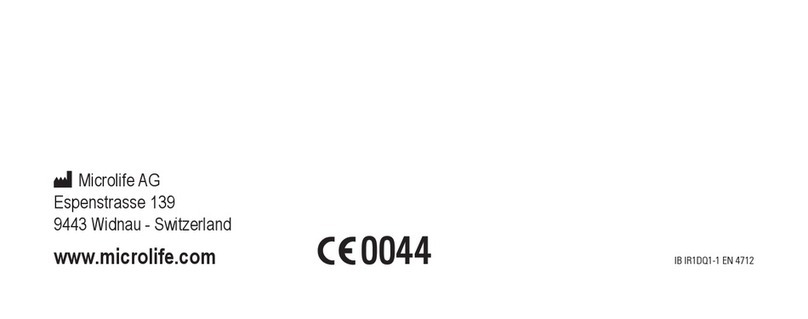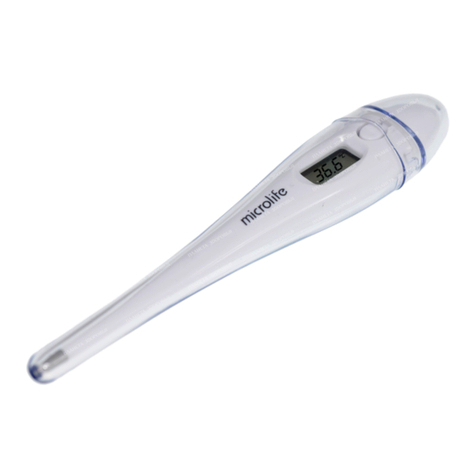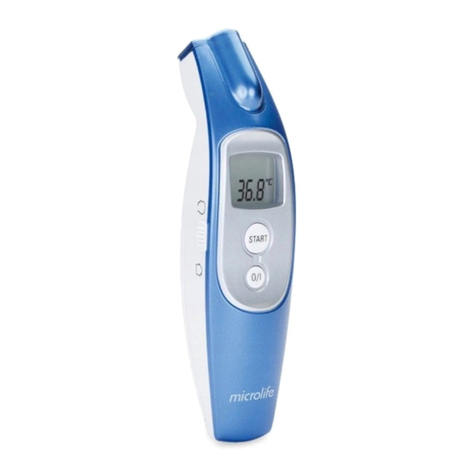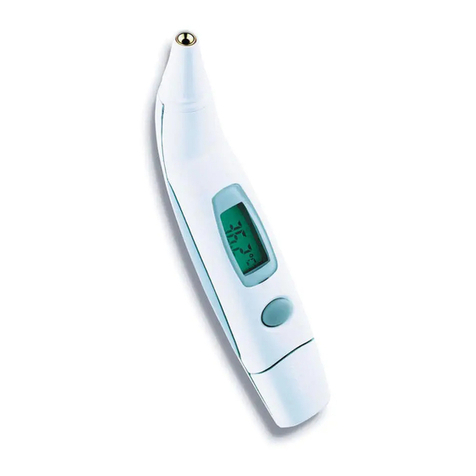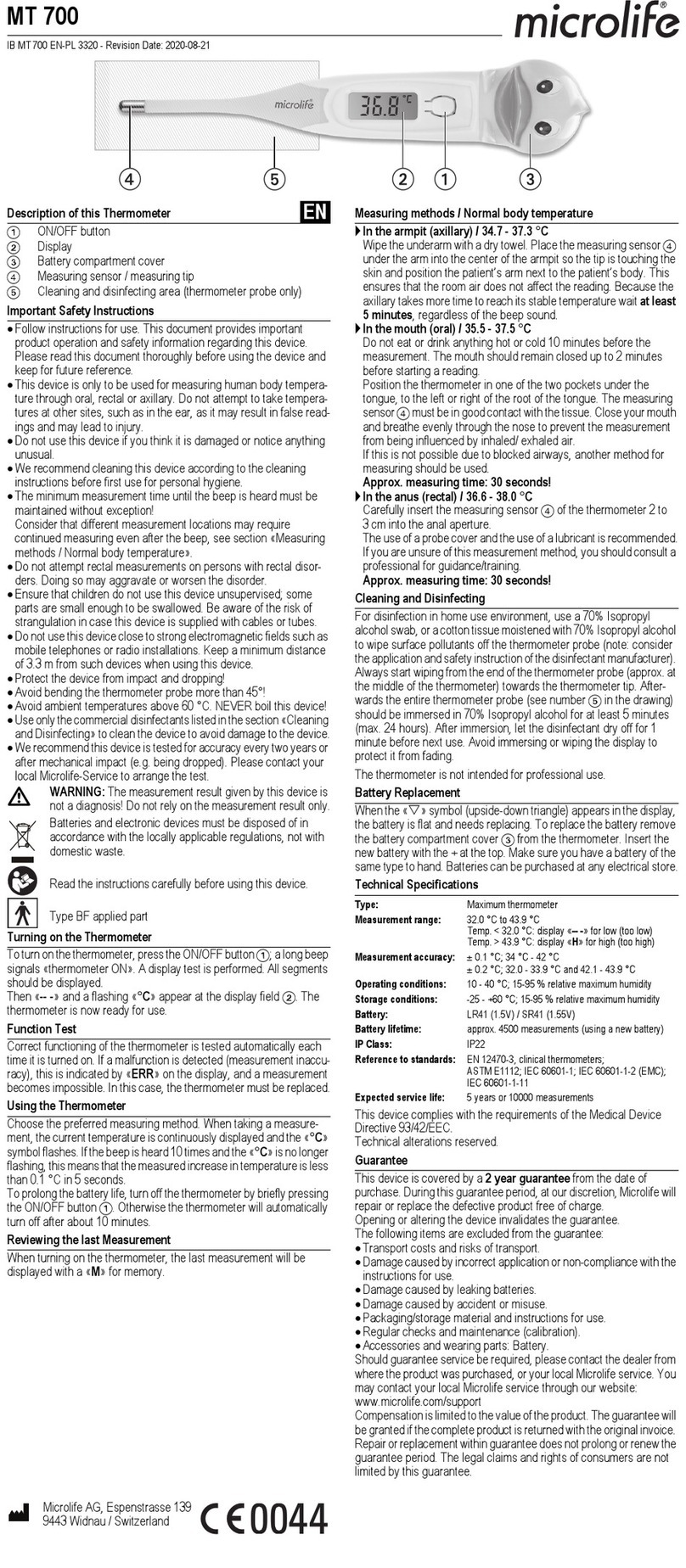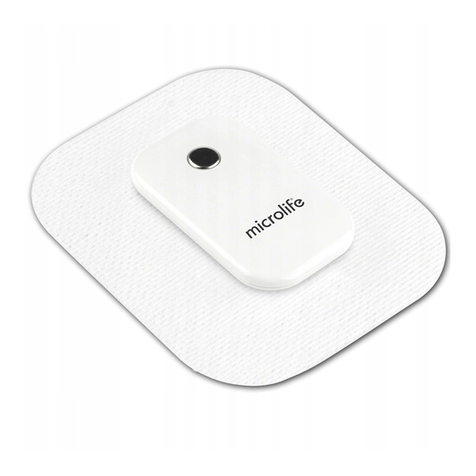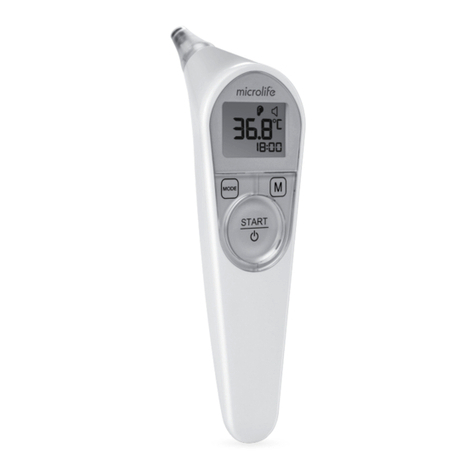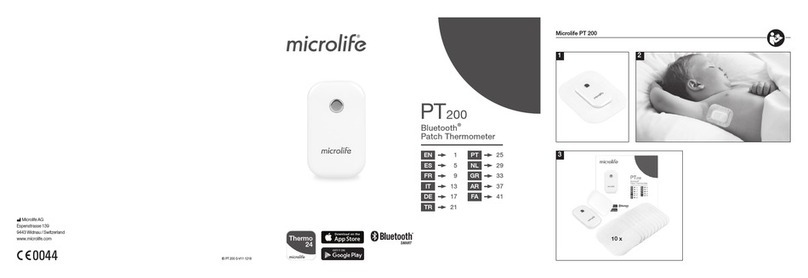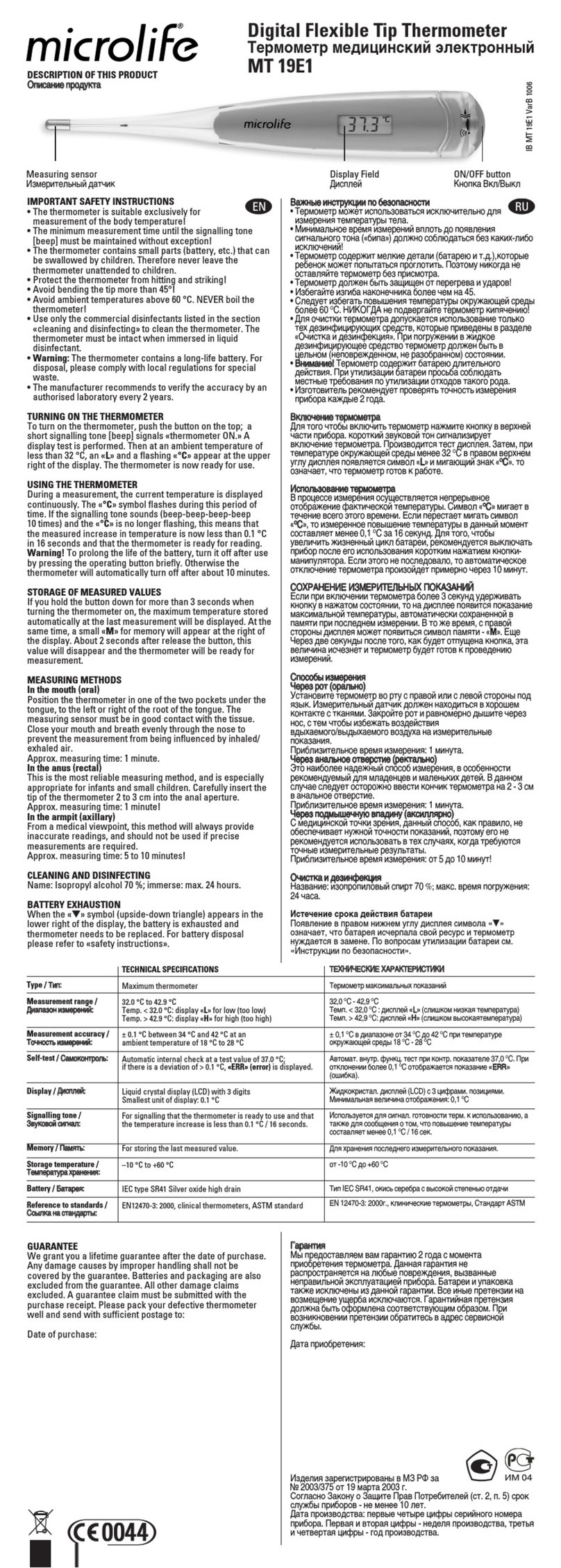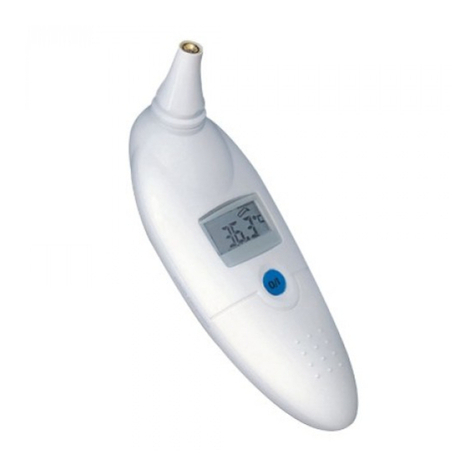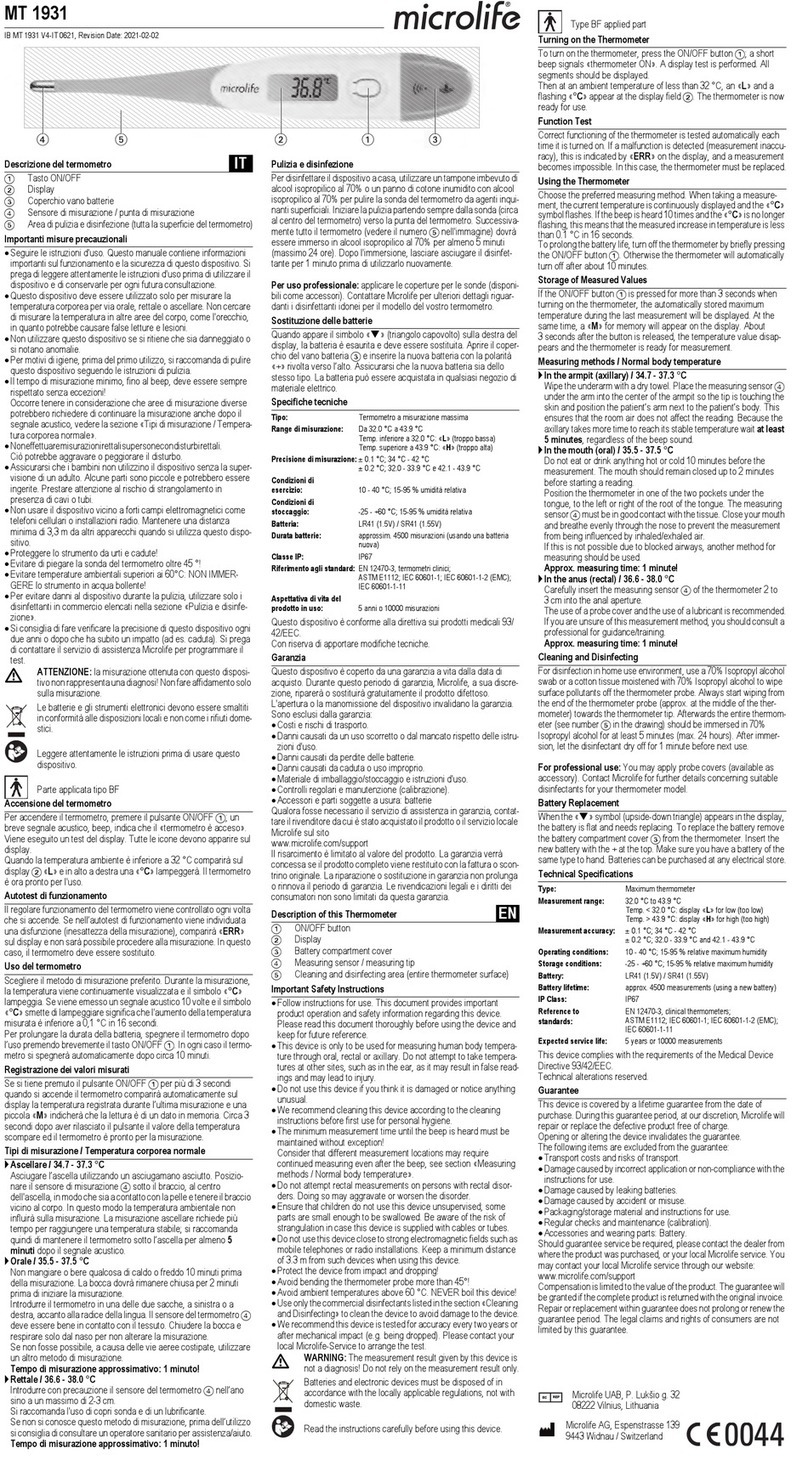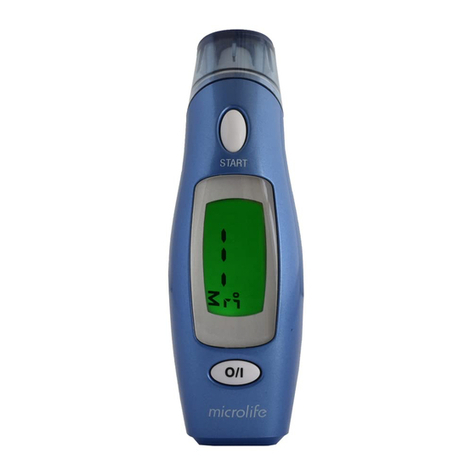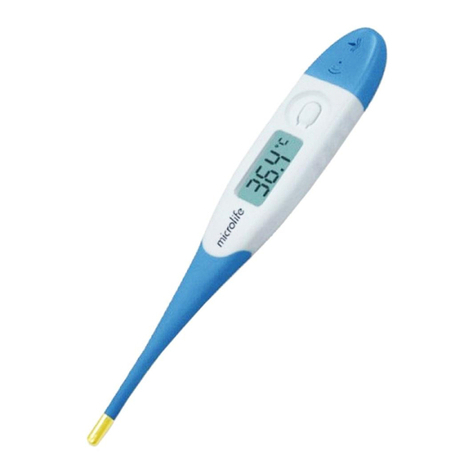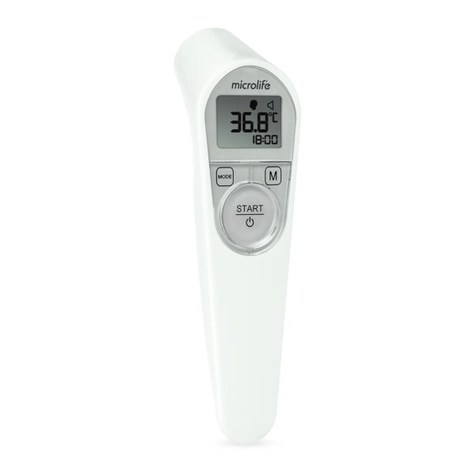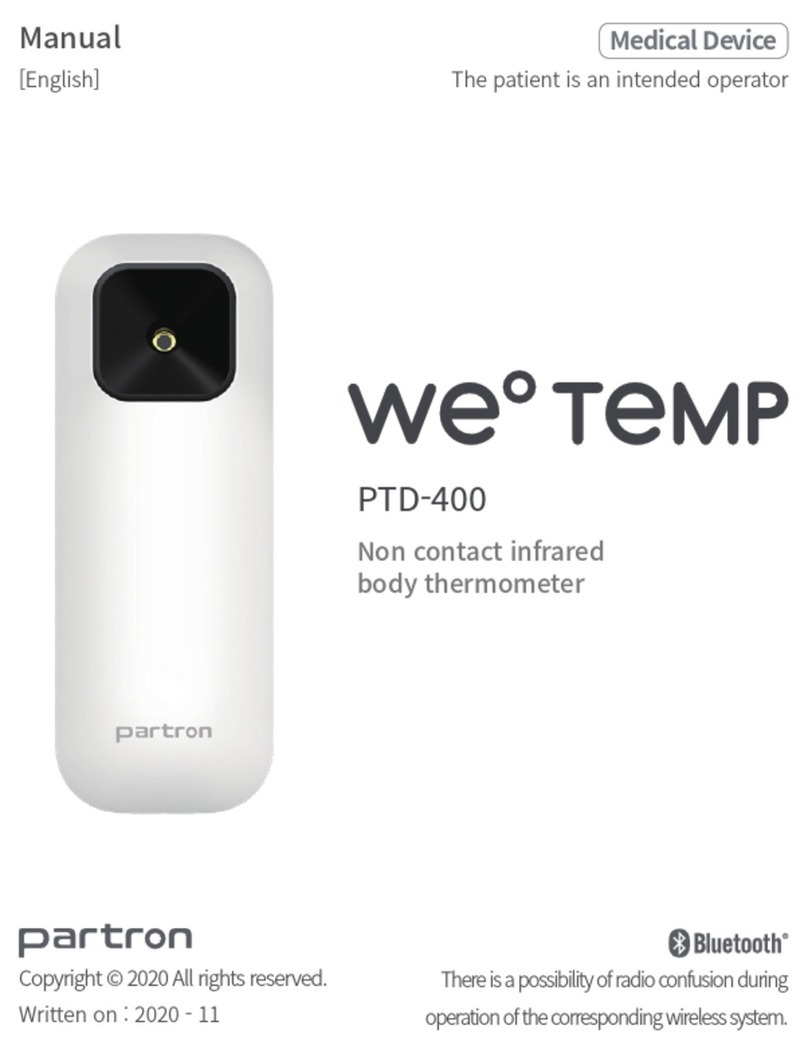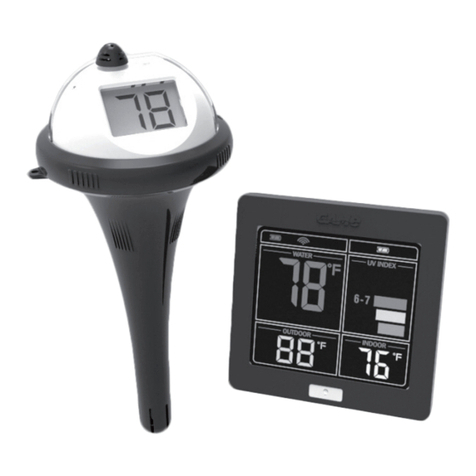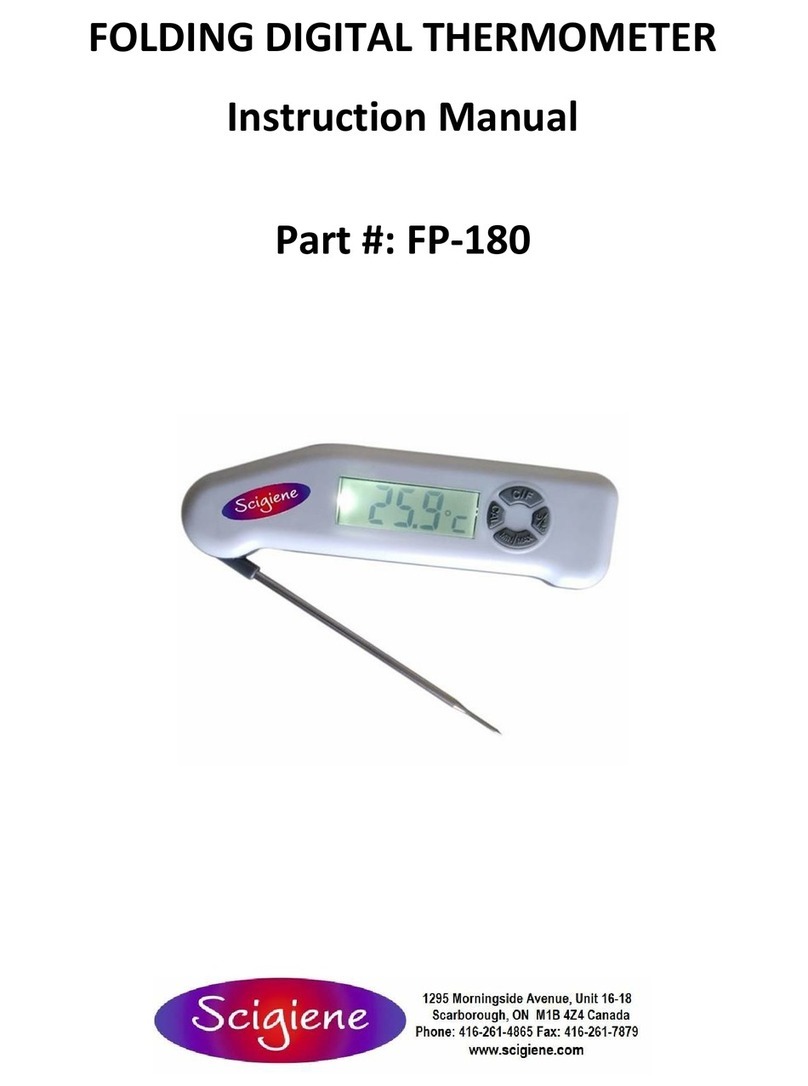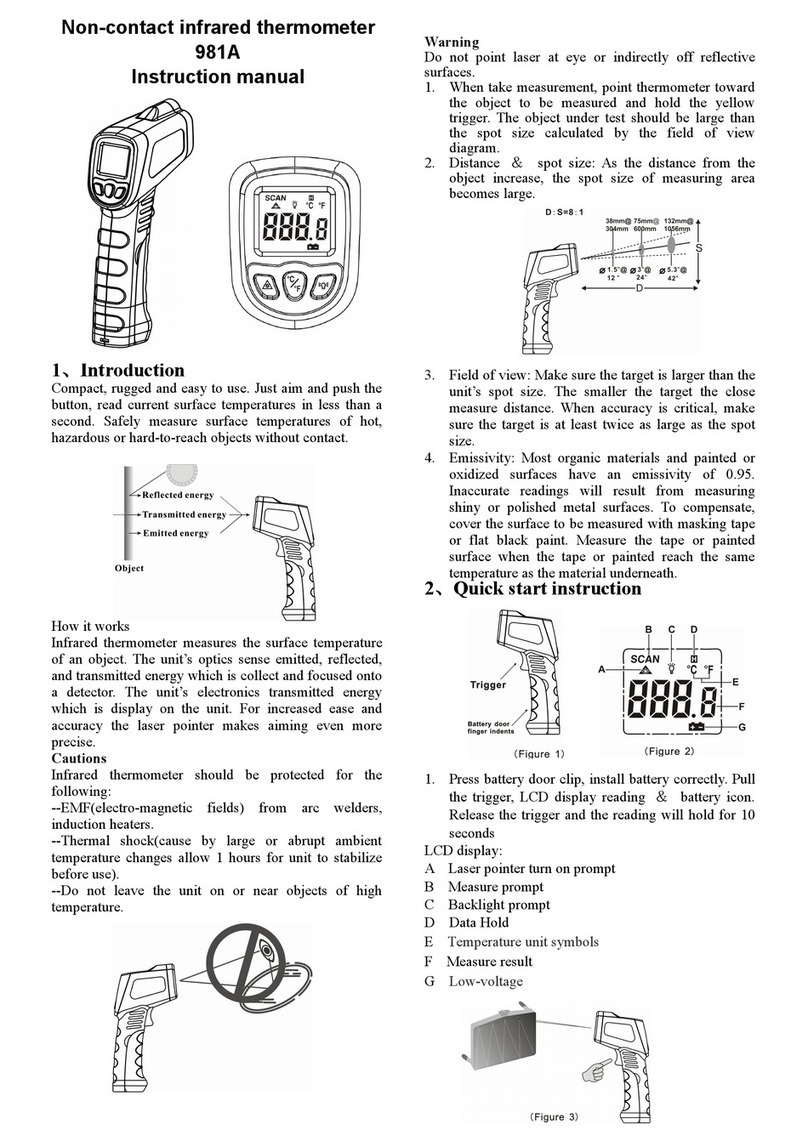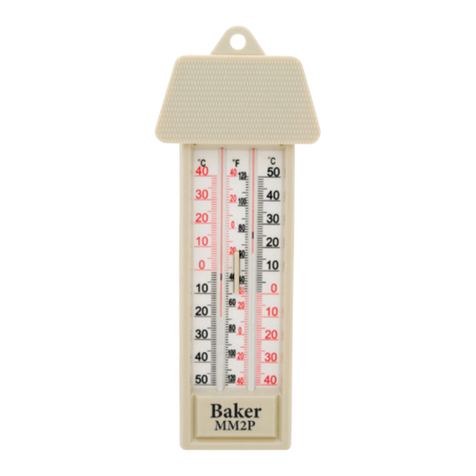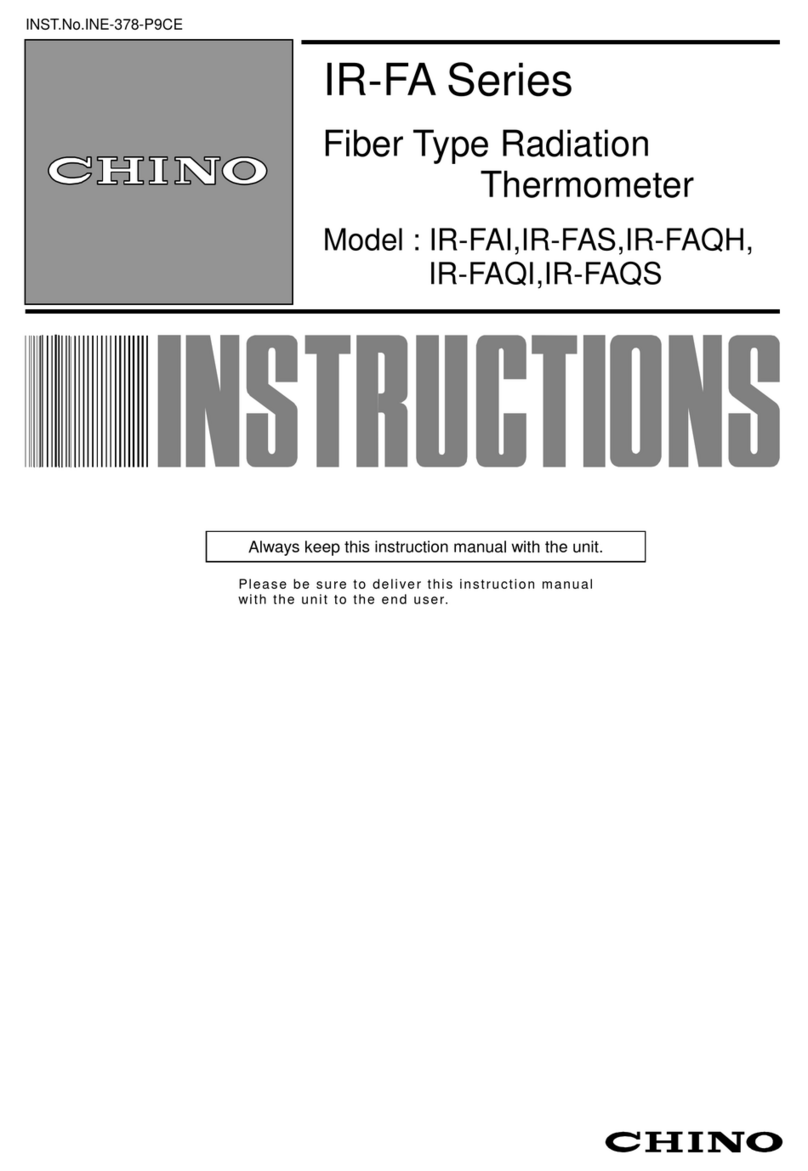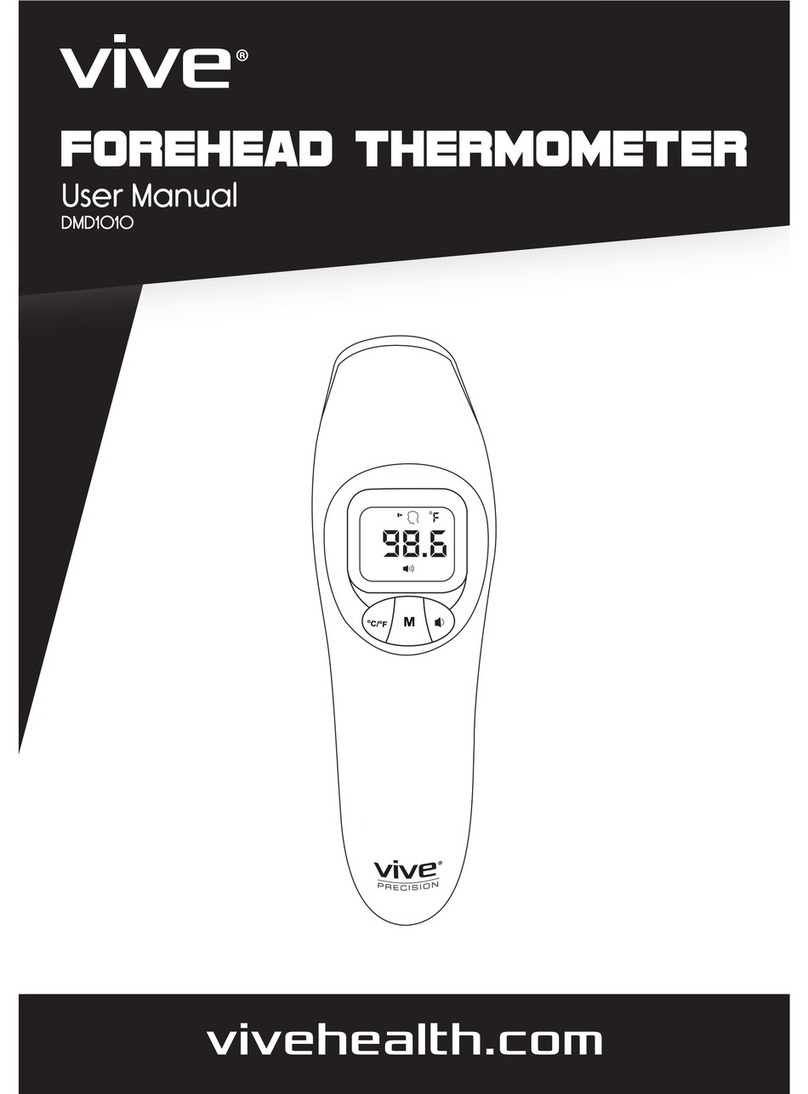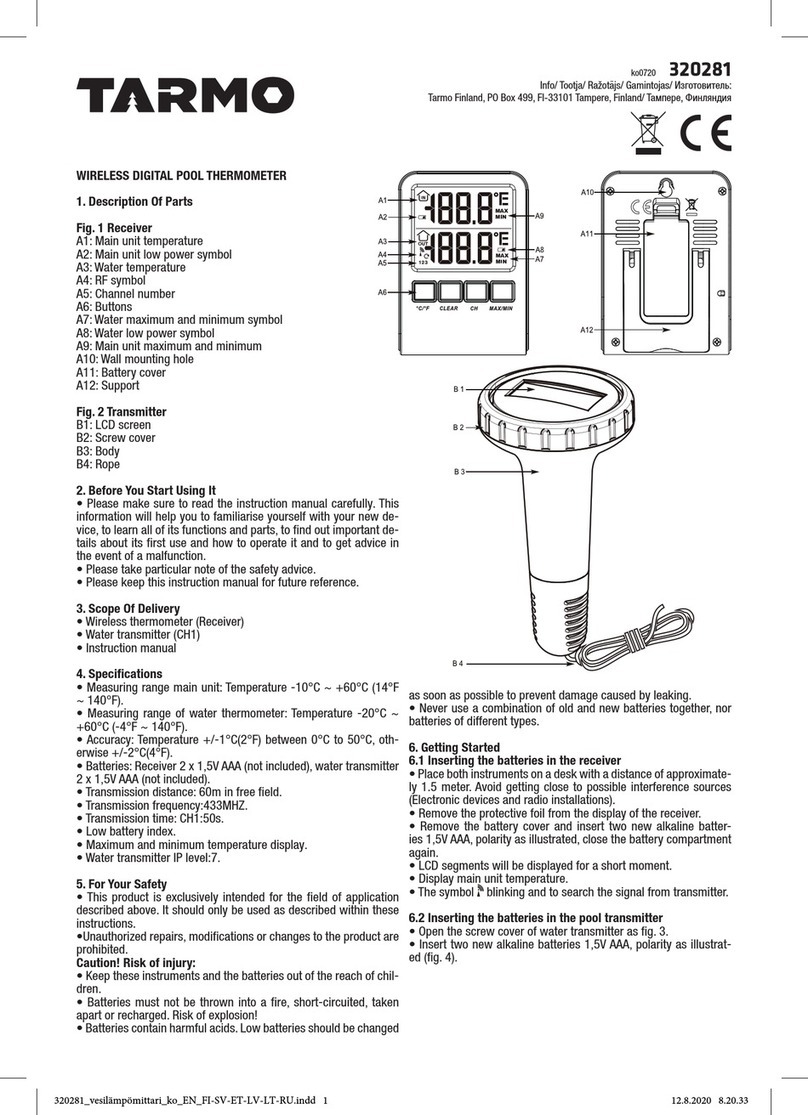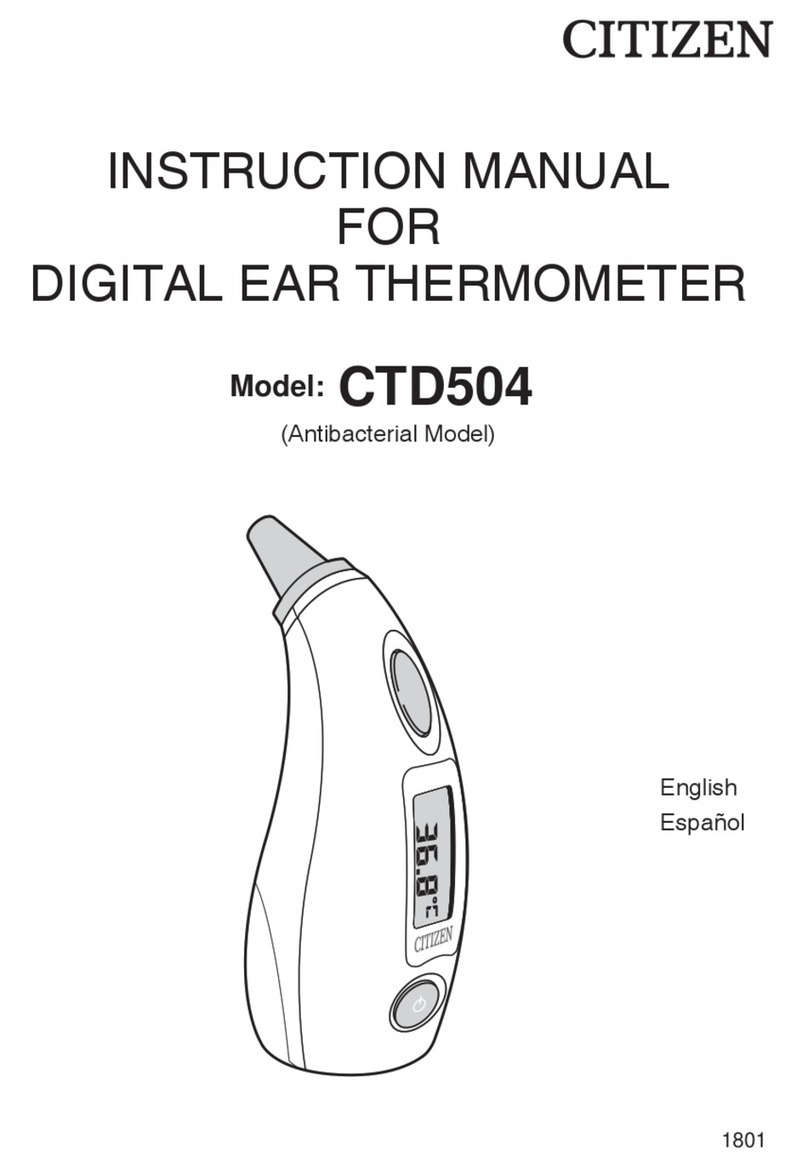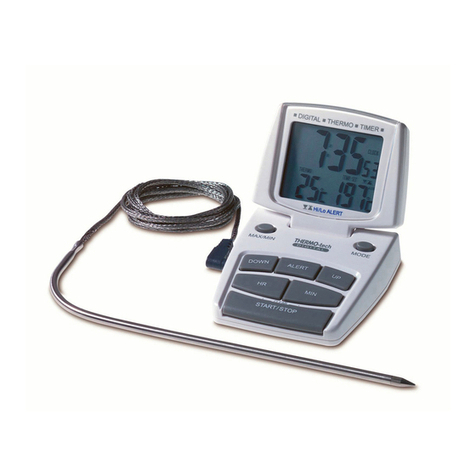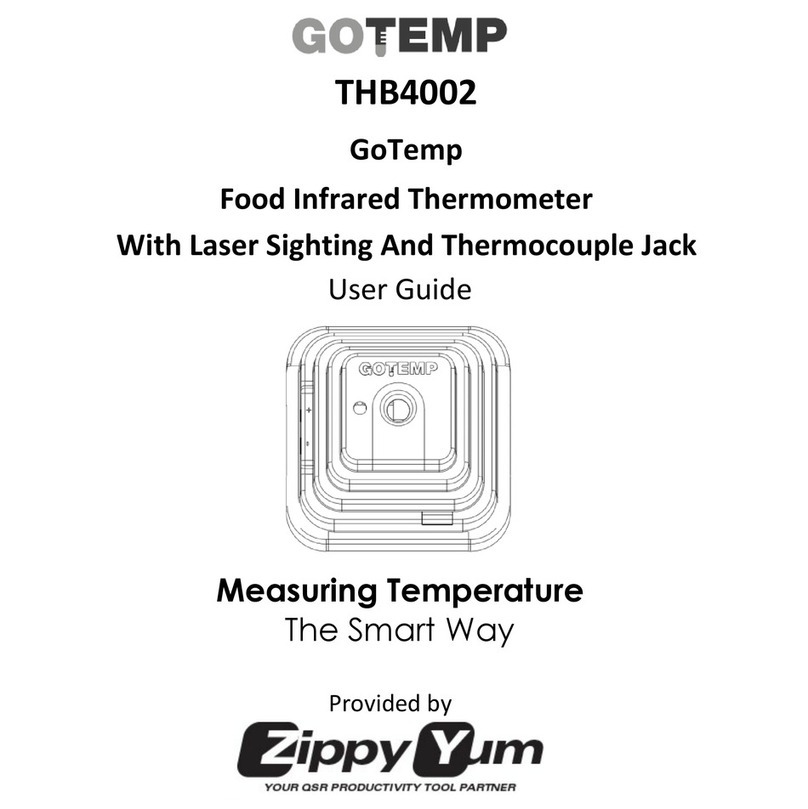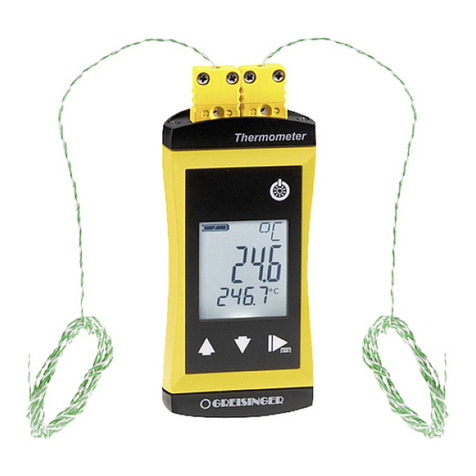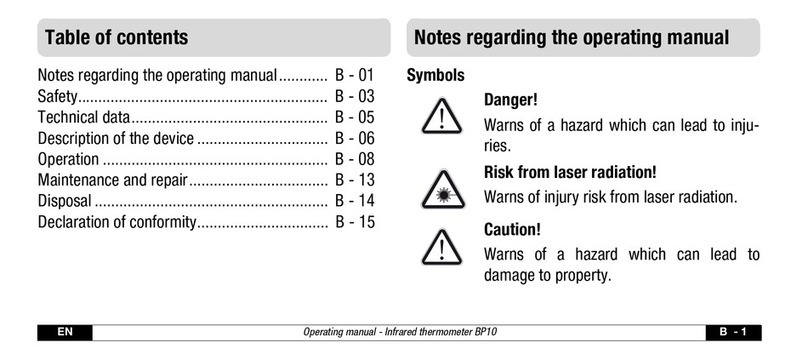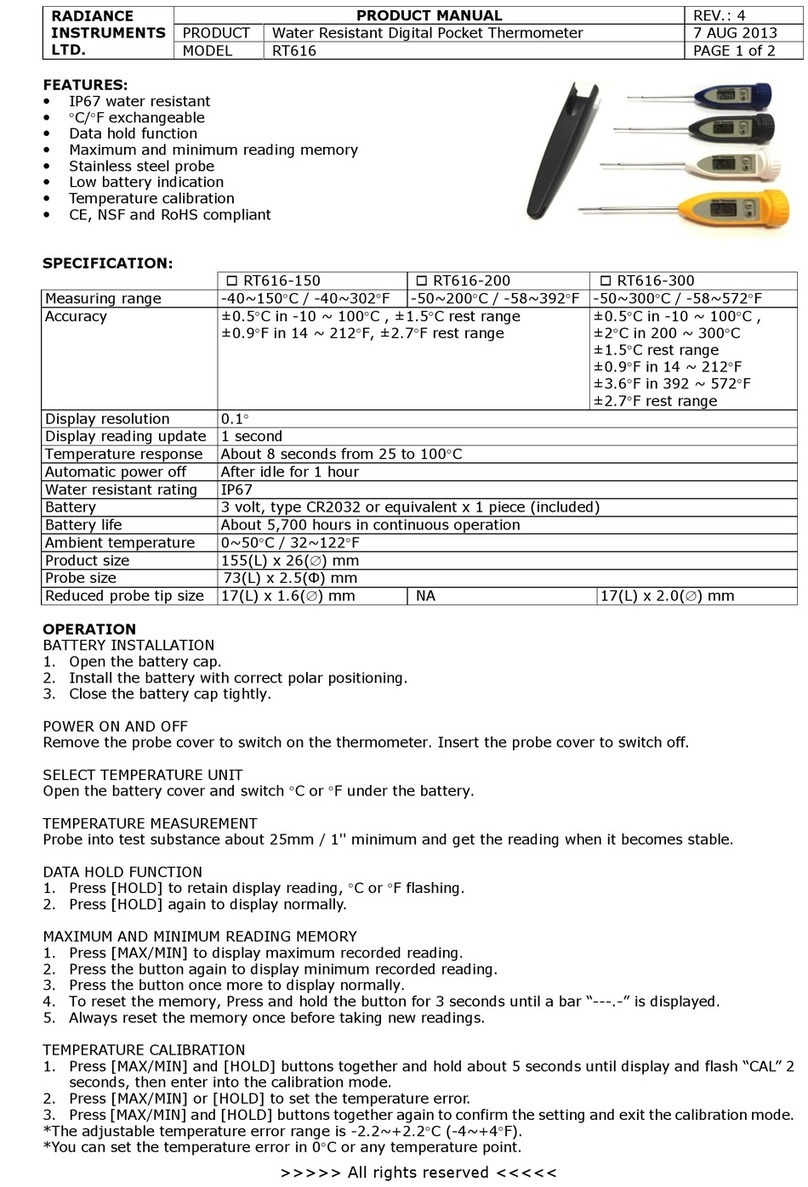
MT 60
IB MT 60 EN-PT-AR 4820 - Revision Date: 2020-11-11
Description of this Thermometer
Important Safety Instructions
Follow instructions for use. This document provides important
product operation and safety information regarding this device.
Please read this document thoroughly before using the device and
keep for future reference.
This device is only to be used for measuring human body tempera-
ture through oral, rectal or axillary. Do not attempt to take tempera-
tures at other sites, such as in the ear, as it may result in false read-
ings and may lead to injury.
Do not use this device if you think it is damaged or notice anything
unusual.
We recommend cleaning this device according to the cleaning
instructions before first use for personal hygiene.
The minimum measurement time until the beep is heard must be
maintained without exception!
Consider that different measurement locations may require
continued measuring even after the beep, see section «Measuring
methods / Normal body temperature».
For safety reasons (risk of rectal perforation) rectal measurement in
children younger than 3 years must be performed only by trained
health care personnel(professional user). Use another measurement
method instead. For rectal fever measurement in small children
younger than 3 years, thermometers with a flexible tip are available.
Do not attempt rectal measurements on persons with rectal disor-
ders. Doing so may aggravate or worsen the disorder.
Ensure that children do not use this device unsupervised; some
parts are small enough to be swallowed.
The battery is well sealed inside the thermometer to reduce the risk
to be swallowed by children.
Do not use this device close to strong electromagnetic fields such as
mobile telephones or radio installations. Keep a minimum distance
of 3.3 m from such devices when using this device.
Protect the device from impact and dropping!
Avoid ambient temperatures above 60 °C. NEVER boil this device!
Use only the commercial disinfectants listed in the section «Cleaning
and Disinfecting» to clean the device to avoid damage to the device.
We recommend this device is tested for accuracy every two years or
after mechanical impact (e.g. being dropped). Please contact your
local Microlife-Service to arrange the test.
WARNING: The measurement result given by this device is
not a diagnosis! Do not rely on the measurement result only.
Batteries and electronic devices must be disposed of in
accordance with the locally applicable regulations, not with
domestic waste.
Read the instructions carefully before using this device.
Type BF applied part
Turning on the Thermometer
To turn on the thermometer, press the ON/OFF button 1. A display
test is performed. All segments should be displayed.
Then at an ambient temperature of less than 32 °C, an «L» and a
flashing «°C» appear at the display field 2. The thermometer is now
ready for use.
Function Test
Correct functioning of the thermometer is tested automatically each
time it is turned on. If a malfunction is detected (measurement inaccu-
racy), this is indicated by «ERR» on the display, and a measurement
becomes impossible. In this case, the thermometer must be replaced.
Using the Thermometer
Choose the preferred measuring method. When taking a measure-
ment, the current temperature is continuously displayed and the «°C»
symbol flashes. If the beep is heard 10 times and the «°C» is no longer
flashing, this means that the measured increase in temperature is less
than 0.1 °C in 16 seconds and that the thermometer can now be read.
To prolong the battery life, turnoff the thermometer by briefly pressing
the ON/OFF button 1. Otherwise the thermometer will automatically
turn off after about 10 minutes.
Storage of Measured Values
If the ON/OFF button 1is pressed for more than 3 seconds when
turning on the thermometer, the automatically stored maximum
temperature during the last measurement will be displayed. At the
same time, a «M» for memory will appear on the display. About
2 seconds after the button is released, the temperature value disap-
pears and the thermometer is ready for measurement.
Measuring methods / Normal body temperature
In the armpit (axillary) / 34.7 - 37.3 °C
Wipe the underarm with a dry towel. Place the measuring sensor 3
under the arm into the center of the armpit so the tip is touching the
skin and position the patient’s arm next to the patient’s body. This
ensures that the room air does not affect the reading. Because the
axillary takes more time to reach its stable temperature wait at least
5 minutes, regardless of the beep sound.
In the mouth (oral) / 35.5 - 37.5 °C
Do not eat or drink anything hot or cold 10 minutes before the
measurement. The mouth should remain closed up to 2 minutes
before starting a reading.
Position the thermometer in one of the two pockets under the
tongue, to the left or right of the root of the tongue. The measuring
sensor 3must be in good contact with the tissue. Close your mouth
and breathe evenly through the nose to prevent the measurement
from being influenced by inhaled/ exhaled air.
If this is not possible due to blocked airways, another method for
measuring should be used.
Approx. measuring time: 1 minute!
In the anus (rectal) / 36.6 - 38.0 °C
Attention: For the prevention of rectal perforation in children
(younger than 3 years), we recommend using another measuring
method, or the use of a thermometer with flexible tip.
Carefully insert the measuring sensor 3of the thermometer 2 to
3 cm into the anal aperture.
The use of a probe cover and the use of a lubricant is recommended.
If you are unsure of this measurement method, you should consult a
professional for guidance/training.
Approx. measuring time: 1 minute!
Cleaning and Disinfecting
For disinfection in home use environment, use a 70% Isopropyl alcohol
swab or a cotton tissue moistened with 70% Isopropyl alcohol to wipe
surface pollutants off the thermometer probe. Always start wiping from
the end of the thermometer probe (approx. at the middle of the ther-
mometer) towards the thermometer tip. Afterwards the entire thermom-
eter (see number
4
in the drawing) should be immersed in 70%
Isopropyl alcohol for at least 5 minutes (max. 24 hours). After immer-
sion, let the disinfectant dry off for 1 minute before next use.
For professional use: You may apply probe covers (available as
accessory). Contact Microlife for further details concerning suitable
disinfectants for your thermometer model.
1ON/OFF button
2Display
3Measuring sensor / measuring tip
4Cleaning and disinfecting area (entire thermometer surface)
Microlife AG, Espenstrasse 139
9443 Widnau / Switzerland
Battery Exhaustion
When the «» symbol (upside-down triangle) appears on the right
side of the display, the battery is exhausted and the thermometer
needs to be replaced. For battery disposal please refer to «Important
Safety Instructions».
Technical Specifications
This device complies with the requirements of the Medical Device
Directive 93/42/EEC.
Technical alterations reserved.
Guarantee
This device is covered by a lifetime guarantee from the date of
purchase. During this guarantee period, at our discretion, Microlife will
repair or replace the defective product free of charge.
Opening or altering the device invalidates the guarantee.
The following items are excluded from the guarantee:
Transport costs and risks of transport.
Damage caused by incorrect application or non-compliance with the
instructions for use.
Damage caused by leaking batteries.
Damage caused by accident or misuse.
Packaging/storage material and instructions for use.
Regular checks and maintenance (calibration).
Accessories and wearing parts: Battery.
Should guarantee service be required, please contact the dealer from
where the product was purchased, or your local Microlife service. You
may contact your local Microlife service through our website:
www.microlife.com/support
Compensation is limited to the value of the product. The guarantee will
be granted if the complete product is returned with the original invoice.
Repair orreplacement within guarantee does not prolong orrenew the
guarantee period. The legal claims and rights of consumers are not
limited by this guarantee.
Descrição do termómetro
Instruções de segurança importantes
Siga as instruções de uso. Este documento fornece informações
importantes de manuseamento e segurança do produto em relação
a este dispositivo. Leia atentamente este documento antes de usar
o dispositivo e guarde-o para referência futura.
Este dispositívo deve ser apenas usado apenas no corpo humano:
via oral, retal ou axilar. Não tente fazer a medição da temperatura
em qualquer outra zona, como as orelhas, pois pode resultar em
leituras falsas e algum dano.
Não utilize este dispositivo se achar que está danificado ou se
observar algo anormal no dispositivo.
Recomendamos limpar este dispositivo de acordo com as instru-
ções de limpeza, antes da primeira utilização, para higiene pessoal.
É necessário respeitar sempre o tempo de medição mínimo até o
sinal sonoro ser emitido!
Consider that different measurement locations may require conti-
nued measuring even after the beep, see section «Métodos de
medição / Temperatura corporal normal».
Devido a razões de segurança (risco de penetração retal) medição
de temperatura retal em crianças com menos de 3 anos devem ser
realizadas apenas por profissionais de saúde. Para medição da
temperatura retal em crianças com menos de 3 anos, estão dispo-
níveis termómetros com ponta flexível.
Não procure medir a temperatura do reto de uma pessoa com
problemas retais. Pois pode levar a um agravamento da situação.
Certifique-se de que não deixa o dispositivo ao alcance das
crianças; algumas peças são muito pequenas e podem ser engo-
lidas.
A pilha está perfeitamente selada no interior do termómetro para
reduzir o risco de ingestão por crianças.
Não utilize o dispositivo na proximidade de campos electromagné-
ticos fortes, tais como, telemóveis ou instalações radiofónicas.
Manter uma distância mínima de 3,3 m a partir dos dispositivos
mencionados quando se utiliza este dispositivo.
Proteja o instrumento contra impactos e quedas!
Evite temperaturas ambientes superiores a 60 °C. NUNCA ferva o
instrumento!
Utilize apenas desinfetantes comerciais listados na secção
«Limpeza e desinfeção» para limpeza do dispositivo e de forma a
evitar danos no mesmo.
Recomendamos a que este dispositivo seja testado após 2 anos ou
impato mecânico (ex.: Cair no Chão). Por favor, contate o represen-
tante da Marca Microlife para resolver a situação.
AVISO: O resultado da medição fornecido por este disposi-
tivo não é um diagnóstico! Não confie apenas no resultado
da medição.
As pilhas e dispositivos eletrónicos têm de ser eliminados
em conformidade com os regulamentos locais aplicáveis,
uma vez que não são considerados resíduos domésticos.
Leia atentamente este manual de instruções antes de utilizar
o dispositivo.
Peça aplicada tipo BF
Ligar o termómetro
Para ligar o termómetro, pressione o botão ON/OFF 1. É efectuado
um teste ao mostrador. Deverão visualizar-se todos os segmentos.
Em seguida, a uma temperatura ambiente inferior a 32 °C, são apre-
sentados os símbolos «L» e «°C» a piscar no mostrador 2. O termó-
metro pode agora ser utilizado.
Teste de funcionamento
O funcionamento correto do termómetro é testado automaticamente
sempre que o instrumento é ligado. Se for detetada qualquer
anomalia (medição incorreta), o visor indicará a informação «ERR»,
ficando impossibilitada a medição. Caso esta situação se verifique, é
necessário substituir o termómetro.
Utilização do termómetro
Escolha o local de medição preferido. Ao efectuar uma medição, a
temperatura atual é visualizada constantemente e o símbolo «°C» é
apresentado a piscar. Se ouvir o sinal sonoro 10 vezes e o símbolo
«°C» deixar de piscar, significa que o aumento de temperatura regis-
tado é inferior a 0,1 °C em 16 segundos e que já é possível efectuar
a leitura do termómetro.
Para prolongar a duração da pilha, desligue o termómetro pressio-
nando por breves instantes o botão ON/OFF 1. Caso contrário, o
termómetro desliga-se automaticamente decorridos 10 minutos.
Type: Maximum thermometer
Measurement range: 32.0 °C to 43.9 °C
Temp. < 32.0 °C: display «L» for low (too low)
Temp. > 43.9 °C: display «H» for high (too high)
Measurement accuracy: ± 0.1 °C; 34 °C - 42 °C
± 0.2 °C; 32.0 - 33.9 °C and 42.1 - 43.9 °C
Operating conditions: 10 - 40 °C; 15-95 % relative maximum humidity
Storage conditions: -25 - +60 °C; 15-95 % relative maximum humidity
Battery: LR41 (1.5V) / SR41 (1.55V)
Battery lifetime: approx. 4500 measurements (using a new battery)
IP Class: IP67
Reference to
standards:
EN 12470-3, clinical thermometers;
ASTM E1112; IEC 60601-1; IEC 60601-1-2 (EMC);
IEC 60601-1-11
Expected service life: 5 years or 10000 measurements
1Botão ON/OFF
2Visor
3Sensor de Medição / Ponta de medição
4Zona de Limpeza e desinfeção (Toda a superficie do termó-
metro)
